 Thanks: 0
 Likes: 0
 Dislikes: 0
-
-
-
Re: 2008 Lexus IS 250 - Pinnacle Detail
Continued...
The Lexus is now perfectly cleaned and dry and ready to pull into the garage.


After pulling the Lexus into the garage out of the heat we then opened all the doors, hood and trunk lid so we could wipe-off any excess water out of the door jambs as well as remove any critters, leaves and sticks that accumulated over time in the channels around the rubber gaskets.
Stretching! (That's what it's called when everything's opened up)


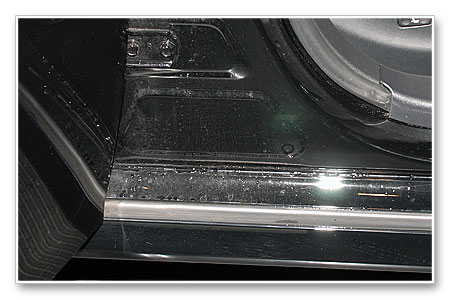


Now that the car is clean and dry we can inspect the paint by feeling the horizontal surfaces for above surface bonded contaminants as well as inspect it visually for defects like swirls, scratches and etchings.
Usually only the horizontal surfaces need to be clayed because that's where air-borne contaminants will land and accumulate over time and if not removed within a day or two, at least some contaminants will bond to the surface.

You can if you like inspect the vertical surfaces too as it is possible to accumulate contaminants like air-borne paint overspray, highway paint, tar and tree sap on these panels.
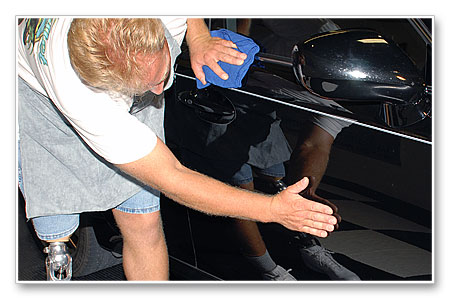
Inspection Results
After feeling all the major panels, our inspection revealed that there was only light contaminants bonded to the surface and nothing real noticeable on the vertical panels so we'll clay the horizontal panels using the Pinnacle Ultra Poly-Clay which is a very mild clay completely safe for frequent use on cars that are well kept and parked inside or under cover at least part of each day.
After inspecting the paint for above surface bonded contaminants we visually inspected the paint for swirls, scratches and etchings. These two photos were taken before the car was washed and most of the spots you see on the paint are mineral deposits sitting on the surface as well as some scratches (RIDS), and light swirls.
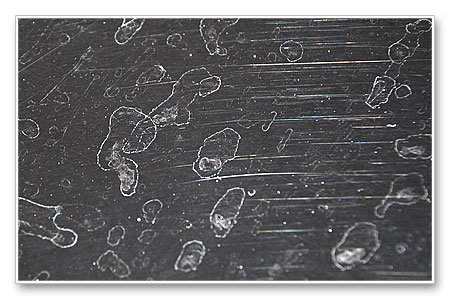
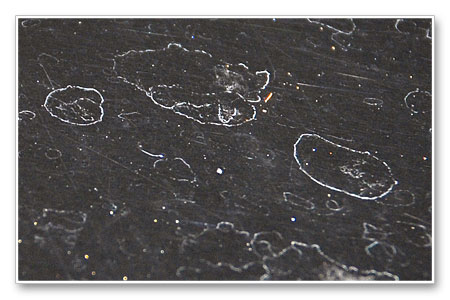
(Down below I'll post what this area looked like after claying)
After washing the car, most of the mineral deposits washed off but some did remain and claying will remove any mineral deposits still sitting on top the surface. If after claying you still see the outline of where the spots were this means the water spots actually etched the surface which means the spots are also a Type II water spot and you'll have to use a compound or swirl mark remover to remove a little paint surrounding the etchings or spots to level the surface smooth again.
See this article for more information
What it means to remove swirls, scratches and water spots out of automotive clear coats
Last edited by Mike Phillips; 08-19-2009 at 02:31 PM.
-
Re: 2008 Lexus IS 250 - Pinnacle Detail
Continued...
Now that we have a good understanding of what we're going to need to do to restore the finish on this Lexus we're going to take moment to prepare for the job.
We can't stress enough the importance of working clean. I can get as D.O. as the next guy and usually more so and that starts with a clean table to hold my products, pads and microfibers. It doesn't do any good to use clean microfiber polishing cloths, applicator pads and buffing pads if you're setting them on a dirty surface.
This is pretty basic but just the same, we're using Meguiar's All Purpose Cleaner Plus with a microfiber to wipe the top of our work table clean before placing anything onto it. Not only is APC+ great for cleaning multiple surfaces on the car, it's also really handy for all kinds of cleaning jobs in the garage as well as inside the house. Be sure to get the matching OSHA approved Spray Bottle as they are pre-marked for the correct dilution levels and the hand pump to dispense the product into the bottle.

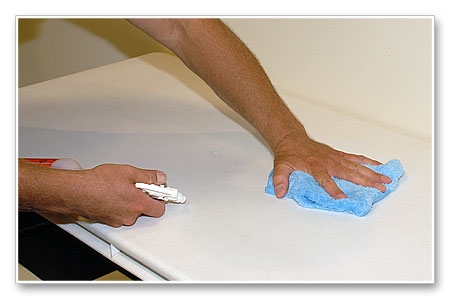
The table actually looked pretty clean but APC+ proved otherwise.
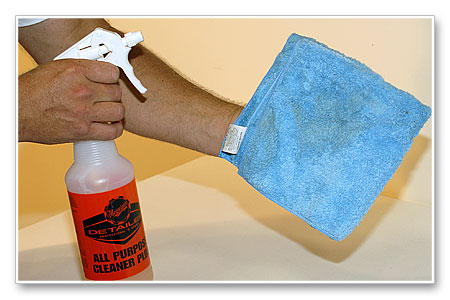
Anytime you're using new microfibers be sure to remove the tags from the edge first.

Now we're ready to assemble our products for this project.

Now that are work area is clean and stocked up, we're ready to get to work. First up we'll clay the paint. Pinnacle Ultra Fine Detailing Clay can be purchased as a single 4 ounce clay bar or two 4 ounce clay bars. 4 ounces is approximately 114 grams which is very healthy chunk of clay that you can easily break into two pieces. Use one piece and save the other for another project.
Remove the cellophane wrapper

Tear the clay bar into two pieces
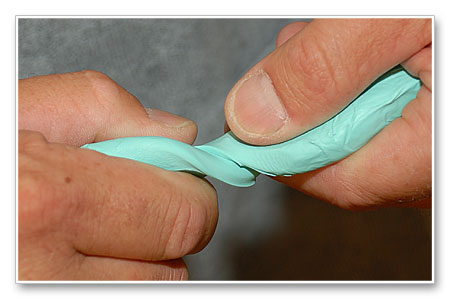
You can store your clay in the plastic container it comes in or some people like to squirt a little quick detailer into a Zip-lock baggie and store it this way as the clay can stick to the plastic container over time.
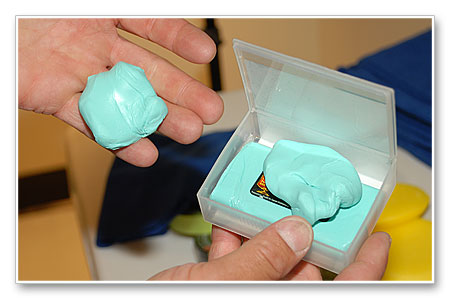
Knead the clay into a flat patty kind of like a small pancake
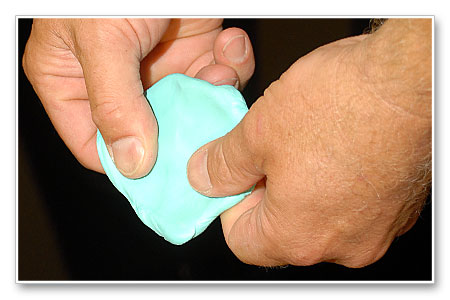
Usually a round patty of clay about 4 to 4.5 inches in diameter works well for most people.
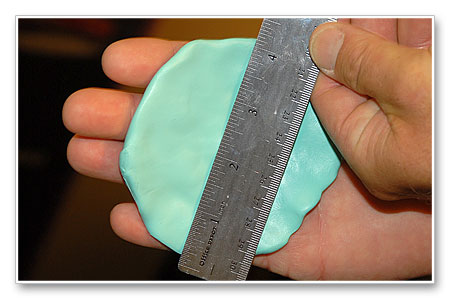
Here's a tip, place the clay patty in you hand with your fingertips extended past the edge of the patty like, I'll explain why down below.
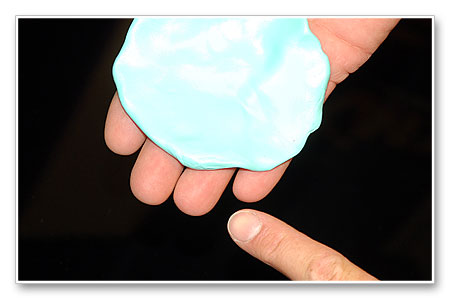
When you're ready to start claying, first mist your clay lubricant onto the face of the clay patty, in this example we're using Pinnacle Clay Lubricant.
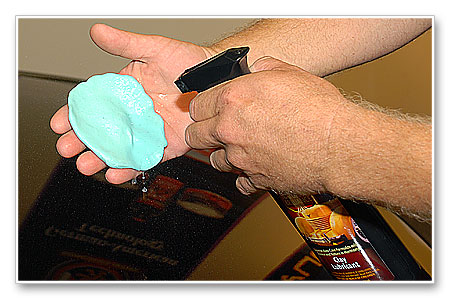
Next, spray the section you're going to clay, this is usually a section about 16" to 20" squarish in size, you don't want to tackle too large of an area at one time because you want to be thorough in your claying passes, so stick with a manageable section.
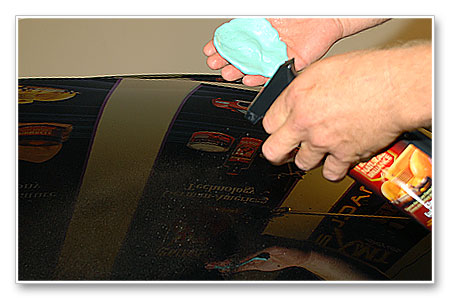
Next, using light pressure for a light light build-up of contaminants, begin moving the clay patty over the paint. You can move your hand in straight-lines or circles or a combination of both if you like. Because this detailing clay is non-abrasive to the paint, as long as everything is clean, it doesn't matter which way you move your hand because you're not instilling scratches into the paint.
In some cases you will feel the clay try to drag as you move the clay patty over the surface, this is and indicator of the clay abrading the contaminants. As the clay removes the bonded contaminants you'll notice a decrease in drag and the clay will begin to glide effortlessly over the paint. This is an indicator that this section of paint is now clean and smooth and you can stop at this time.
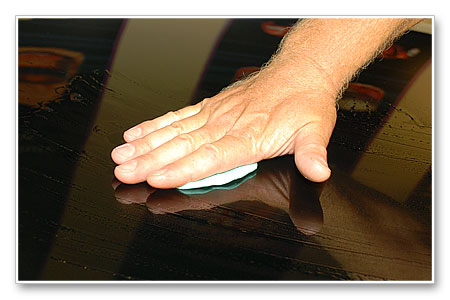
After you're finished claying this section, wipe-off the excess residue from the surface before moving on to new territory. This means having a few clean microfibers on hand and someplace clean and accessible next to the car.
After you wipe the section clean and it's dry, check the surface with a clean dry hand to insure it is in fact smooth and glassy feeling, if it is, try to remember how long you clayed the section or approximately how many strokes you used and then lock this into your memory and duplicate this to each new section you clay. Keep in mind that some bonded contaminants are more stubborn than others and may take more effort to remove or a more aggressive clay formula.
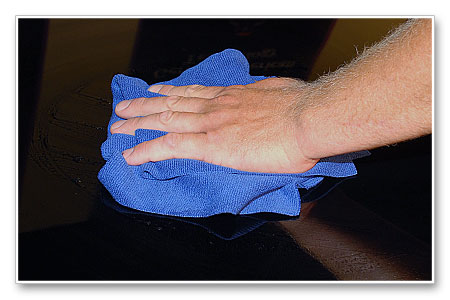
Repeat the above until you've clayed all the panels that felt contaminated wiping the clay lube residue off after claying each section.
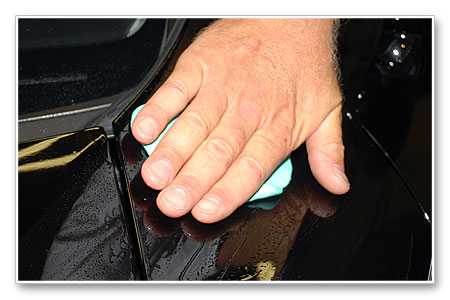
Last edited by Mike Phillips; 08-19-2009 at 02:32 PM.
-
Re: 2008 Lexus IS 250 - Pinnacle Detail
Continued...
After claying each section turn your clay patty over and inspect the clay for contaminants.
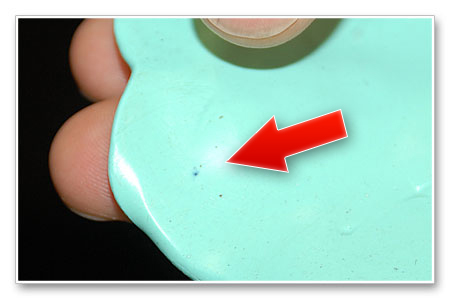
If contaminants are discovered, fold your clay in half and re-knead it to expose a fresh surface.
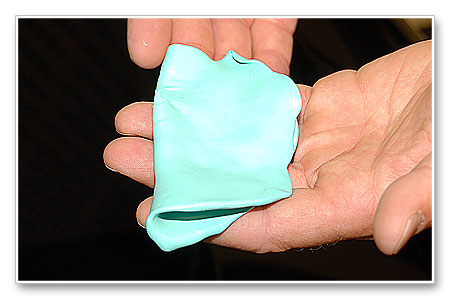
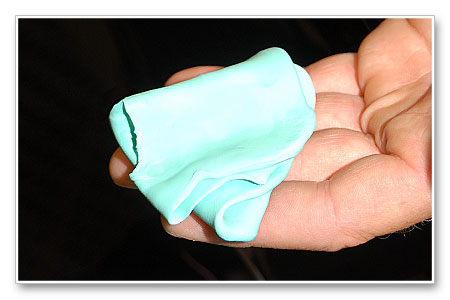
Most people come up with their own personal way to knead the clay back into a flat patty; after folding the clay in half and then in half again I like to form a ball of clay and the place the clay between my palms and then use my fingers to grab my opposing hand and then squeeze the clay ball back out into a starter patty that's small and still somewhat thick.
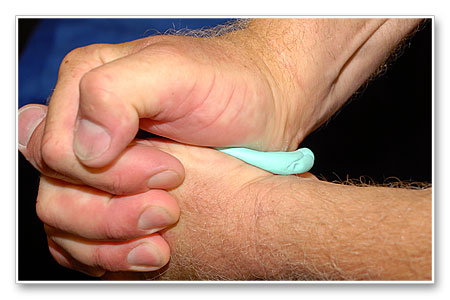
Now that I have the clay patty started I will hold the small, thick patty between my fingers and thumbs and begin methodically kneading it to again create a round patty about 4.5" in diameter.
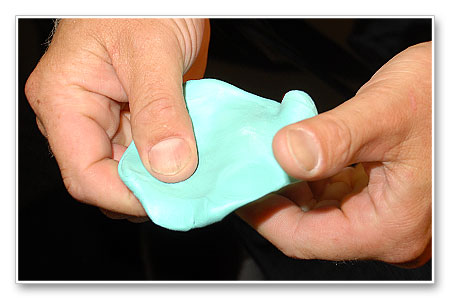
You want it to fit across the distance of your hand with your fingers next to one another like this and with your fingertips extending past the edge of the patty.
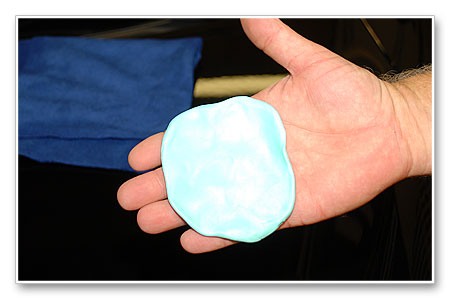
Then get back to work, the car isn't' going to clay itself. Spray some clay lubricant onto the face of the clay and then onto the section to be clayed.
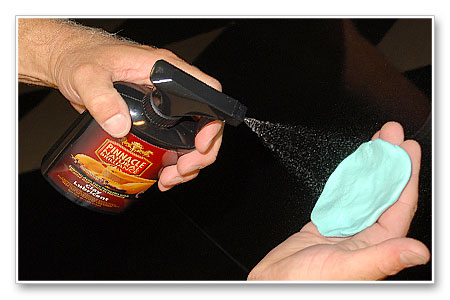
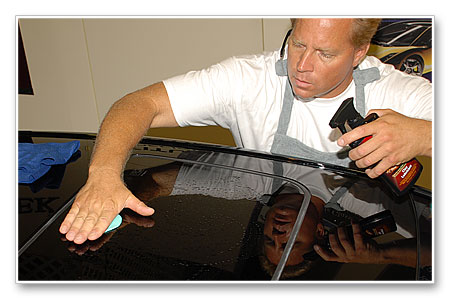
Now here's why to place the clay in your hand with your fingertips extended past the edge of the clay patty. If you position the clay like this you'll apply equal pressure over the entire surface of the face of your fingers without really thinking about it and this will help to place equal pressure over the surface of the clay patty. By doing it this way you can use the patty until you decide to stop, fold the clay over and re-knead it. In other words, you're in control.
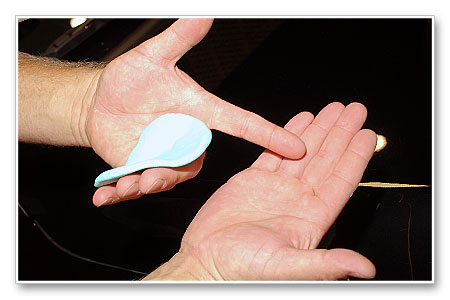
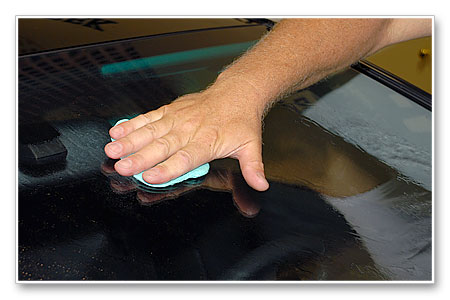
If you place your fingertips inside and on top of the clay patty, without thinking about it you tend to exert more pressure on your fingertips and you'll tend to push holes into and all the way through the clay patty.
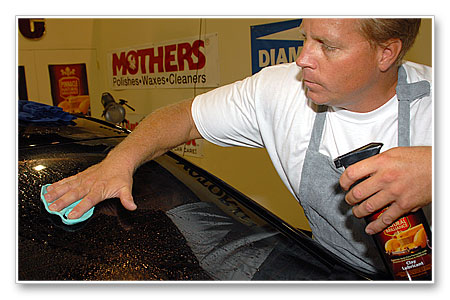
Now you have to stop, fold the clay and re-knead it whether you were ready to re-knead it or not. Now the clay is in control.
It's just a little tip but I like to be in control of each process; you can try this technique and then make up your own mind.
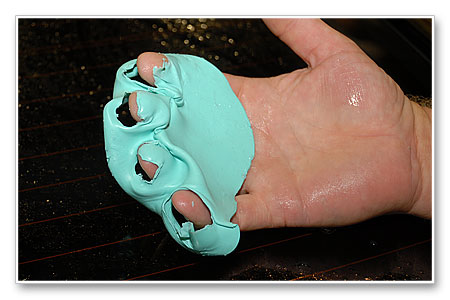
If the car you're working on has any kind of vinyl graphics, stickers or pinstripes, avoid claying over them as you can easily cause the tips to lift and once the tips of any graphic has lifted it's never going to lay flat against the surface again and usually the edges will lift more and more. So be careful around graphics when claying. This also applies when working with paint care products. (Avoid rubbing paint care products over graphics)
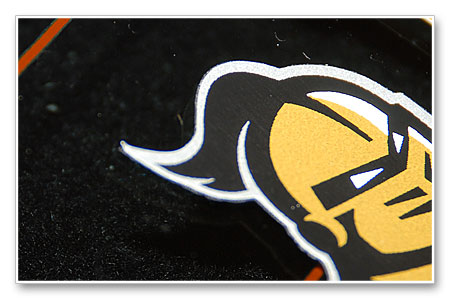
Key Point
Claying removes Above Surface Bonded Contaminants. Claying does not remove Below Surface Defects like etchings, swirls and scratches. After claying we can see the water spots were not only mineral deposits on the surface, but they also left etchings in the paint. Luckily for this car they were very shallow and as our Test Spot will prove, easily removed with a light swirl mark remover.
Before washing


After washing
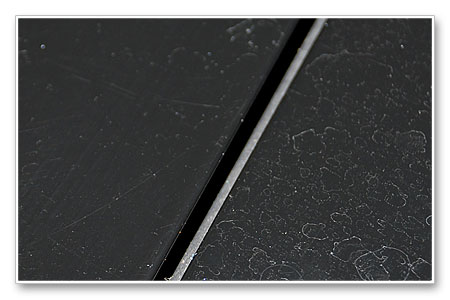
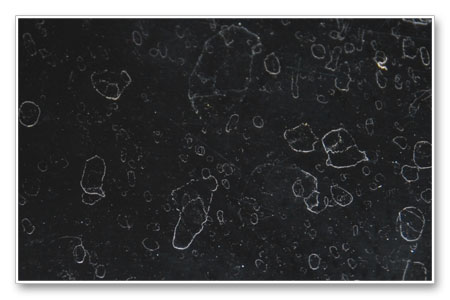
After claying
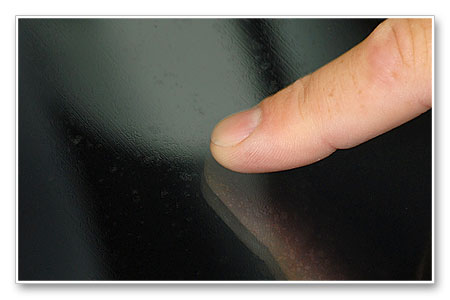
Last edited by Mike Phillips; 08-19-2009 at 02:32 PM.
-
Re: 2008 Lexus IS 250 - Pinnacle Detail
Continued...
Test Spot
Now that we have washed and dried the car and then clayed all the horizontal surfaces we a have a spotlessly clean car ready to start working on. The first thing we're going to do is a Test Spot. A Test Spot is where after you have evaluated the surface condition of the paint and decided on a plan of attack, you first test out your products of choice to a small area to see if your choice of products will work to make one small area or spot look good.
If you're happy with the results then you should be able to duplicate this process over the rest of the car and get the same results. The purpose of a Test Spot is to insure you're not wasting your time by checking first to see if your products of choice do in fact get the job done.
If you're not getting the results you're hoping for and expecting then you simply tweak your process by substituting different products, pads and in some cases different machines, (if you're working by machine), until you dial-in a system that proves itself to one small area. Once a successful system of products and application methods are dialed-in you can simply duplicate this system over the rest of the car.
Anytime you run into problems you can always post what your seeing to the Autogeek Online and the forum members will go above and beyond the call of duty to see you through to success!
Whenever you work on a car you're unfamiliar with, you want to follow the philosophy of,
"Use the least aggressive product to get the job done"
Note the word used in the above statement is aggressive, not abrasive. People remember the saying but sometimes type it out wrong like this,
"Use the least abrasive product to get the job done"
Fact is sometimes you can restore a clean, shiny, defect-free finish using something that's very gentle and not abrasive at all. The trick is to test first to see what you can do.
"You don't know what you can do until try"
Or as it relates to detailing cars,
"You don't know what you can do until you go out into your garage and do some testing and then inspect your results"
Let your results be your guide as to continue with the first products of choice or if you're not seeing the results you're looking for then it might be that you need to substitute a more aggressive product for the first step or possibly stick with the same product but change your application material or process. Application material can be anything you're using to apply your liquid product. Application process is the manner in which you're applying the product, this can be by hand or machine and if by machine your choice of machine.
In keeping with the above philosophy we're going to first try a test spot by hand and if we're not getting the results we're looking for then we'll do a test spot by machine.
Test Spot by Hand
For this first Test Spot by hand we're going to use a non-abrasive paint cleaner with a clean, soft foam applicator pad and then check our results. I've never worked on this car before so I don't know if the paint is hard or soft, or a better way to describe the paint is actually workable or polishable.
For this step we're going to test Pinnacle Paintwork Cleansing Lotion by applying it to a small section of a panel we can look down on to inspect our results like the hood.

Pour a quarter size dollop of product onto the face of your applicator pad.
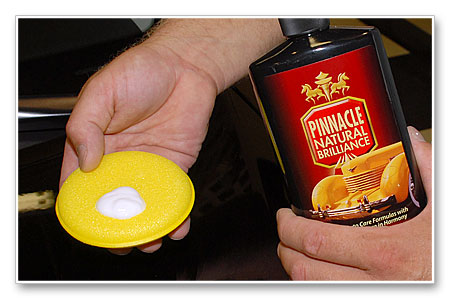
Then sandwiching the applicator pad between your 4 fingers and your thumb, spread the product out over a section about a foot squared and after first spreading it out, (so you have a uniform layer of the paint cleanser on the surface), then begin working the product using firm, even pressure. You want to try to hold the pad as flat as you can against the paint and then try to use as much of the face of your fingers as you can to apply pressure, not just your fingertips or you can accidentally induce what's called fingermarks.
Correct Technique - Hand flat to the panel, helps to spread pressure over the entire face of your fingers.

Wrong Technique - Hand to high, places too much pressure on your fingertips, this can lead to fingermarks.
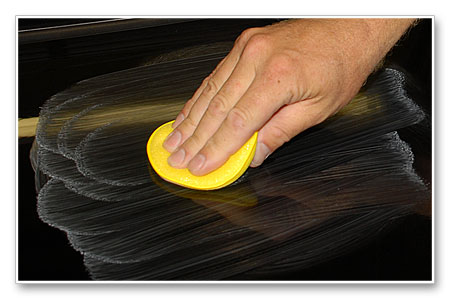
This is also a way you can inspect to see if a car has a clearcoat finish, a single stage finish or even a tinted clearcoat finish. You can't see from this picture any pigment on the pad but in fact there was some very light black pigment on the pad and that leads us to believe this is a tinted clear coat finish. Had it been a single stage finish we would have see a lot of black pigment on the pad.
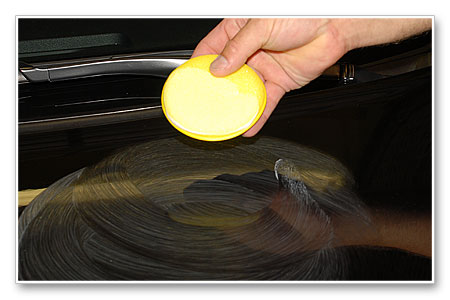
After working the product for 45 seconds to a minute, wipe the residue off and inspect to see if the product is working fast enough and effectively enough to meet your expectation. In this case, there was much improvement but we could tell that in order to get the paint to our level of satisfaction we were going to want to use a machine for the cleaning step.
Machine cleaning and polishing will work faster and more effectively to remove below surface defects and restore a clear, high gloss finish.
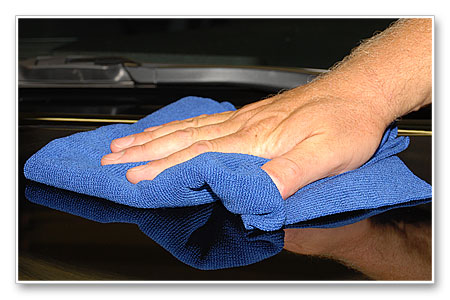
~~~~~~~~~~~~~~~
Note: According to this thread on ClubLexus.com some Lexus models do in fact come with tinted clear coats. This thread was posted on 07-30-03, so it's somewhat dated. Maybe we can get a Lexus aficionado to post some current information on the paint systems being sprayed at the factory level.
(I could do the research but I have a to-do list longer than the Gold Gate Bridge)
Nine Types of Lexus Paint -- Interesting
 Originally Posted by squarehat

The nine types listed:
I. Solid Color-no clearcoat (202 Black Onyx)
II. Metallic/Mica Color-clearcoat
III. MIO color-two clearcoats
IV. PIO color-two clearcoats
V. Pearl Mica color-one clearcoat (color coat, pearl base, clear)--(i.e. Diamond White Pearl)
VI. Flake Pthalocyanine color--two clearcoats
VII. Solid Color--tinted clearcoat
VIII. Solid Color--no clearcoat (again lists 202 Black Onyx, not sure how it differs from type I.)
IX. Metallic Mica Color--clearcoat (the chart show all of the primer and substrate layers, too, this must differentiate it from type II).
Last edited by Mike Phillips; 08-19-2009 at 02:30 PM.
-
Super Moderator

Re: 2008 Lexus IS 250 - Pinnacle Detail
This was great watching Mike detail this Lexus, it was in rough shape when it came in! 
Love the article, Mike would have made a great teacher, the steps are explained so anyone from Novice to Pro can follow along.
-
Super Member

Stephen R. Hollon, Jr
Pearland, TX
(956) 357-7696 – Cell/Text / srhtx@yahoo.com
-
Regular Member
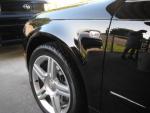
Re: 2008 Lexus IS 250 - Pinnacle Detail
 Originally Posted by Meghan

This was great watching Mike detail this Lexus, it was in rough shape when it came in! 
Love the article, Mike would have made a great teacher, the steps are explained so anyone from Novice to Pro can follow along.
Actually, Mike is a great teacher. Thanks to Mike, many have learned the correct, and proper way of taking care of their vehicles. While at Meg's, Mike taught countless of eager students the ins and outs of proper car care. Thanks to Mike I got started on the right foot into this great hobby/ profession.
Thought I'd share a couple of pictures of Prof. Mike Phillips classes, which I was fortunate enough to attend.
This was where I met Mike for the first time back in 2006. This was actually an open garage, which if I'm not mistaken Mike developed.

Here are some more:
Here I am sitting around while Mike kicks some swirly butt with the rotary.

Classroom learning or lunch break? I'll never tell.

Advanced Class.

Hand Sanding Techniques.

Machine Sanding.

Rotary Lessons.


Playing with some cool toys.


Mikes last TNOG.

A fond farewell.

Mike is definitely a great teacher, and I'm sure he'll be teaching countless of eager students over on the east-side now.
-
Super Member
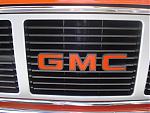
Re: 2008 Lexus IS 250 - Pinnacle Detail
Awesome work on that Lexus, Mike.
Was this a paint correction detail only? or did you detail the interior,engine etc.
Similar Threads
-
By Mike Phillips in forum How to articles
Replies: 9
Last Post: 08-20-2019, 10:25 AM
-
By prateek07 in forum How to make money detailing cars
Replies: 1
Last Post: 11-21-2016, 07:31 PM
-
By kc's in forum Show N' Shine
Replies: 4
Last Post: 07-16-2010, 01:19 PM
-
By maxisiri in forum Auto Detailing 101
Replies: 0
Last Post: 07-31-2009, 05:33 PM
-
By Thejoyofdriving in forum Auto Detailing 101
Replies: 28
Last Post: 08-06-2007, 12:16 AM
 Members who have read this thread: 0
Members who have read this thread: 0
There are no members to list at the moment.
 Posting Permissions
Posting Permissions
- You may not post new threads
- You may not post replies
- You may not post attachments
- You may not edit your posts
-
Forum Rules
|
| S |
M |
T |
W |
T |
F |
S |
| 28 | 29 | 30 |
1
|
2
|
3
|
4
|
|
5
|
6
|
7
|
8
|
9
|
10
|
11
|
|
12
|
13
|
14
|
15
|
16
|
17
|
18
|
|
19
|
20
|
21
|
22
|
23
|
24
|
25
|
|
26
|
27
|
28
|
29
|
30
|
31
| 1 |
|


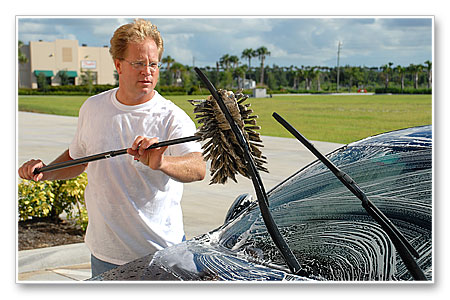












 Thanks:
Thanks:  Likes:
Likes:  Dislikes:
Dislikes: 

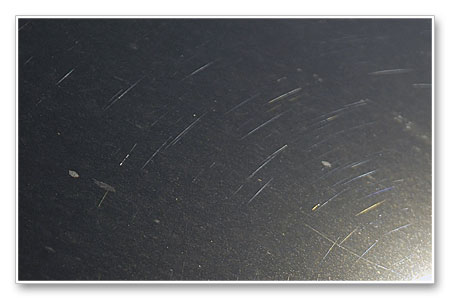







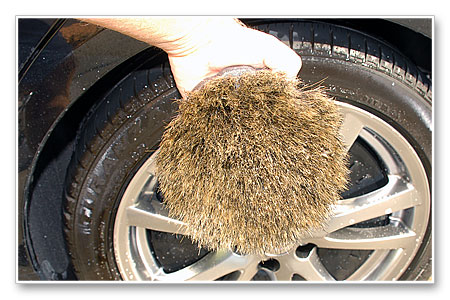

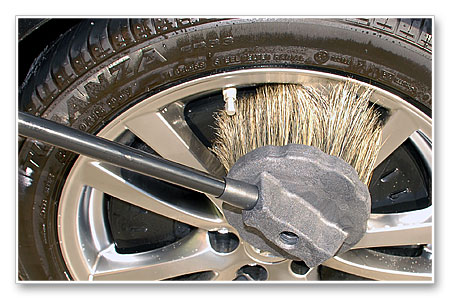

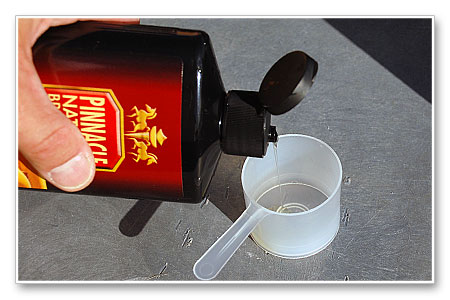
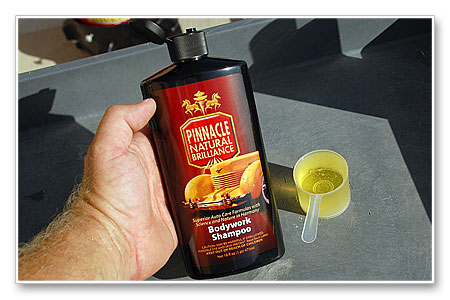

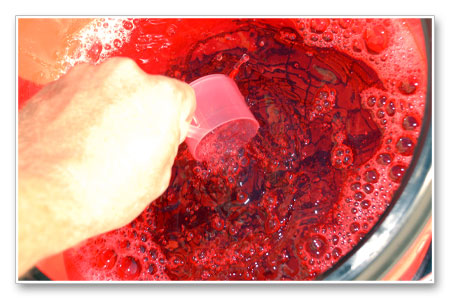
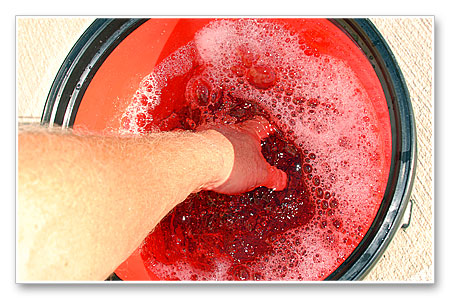



 Reply With Quote
Reply With Quote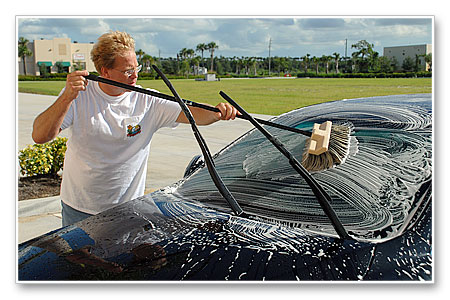

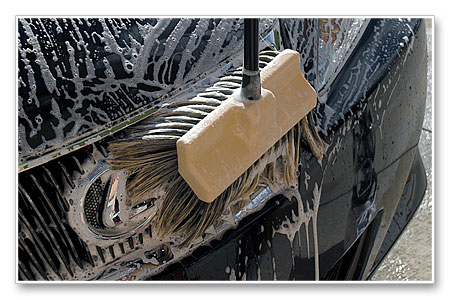
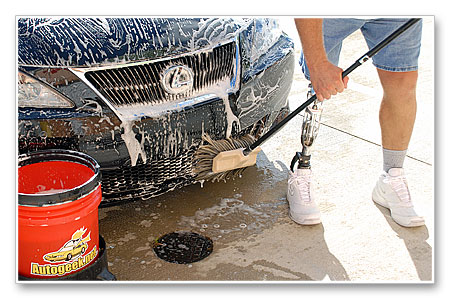



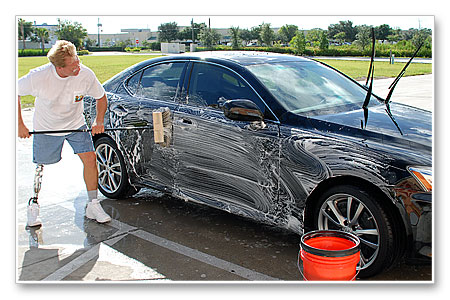

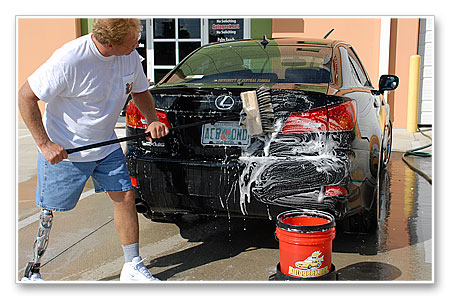

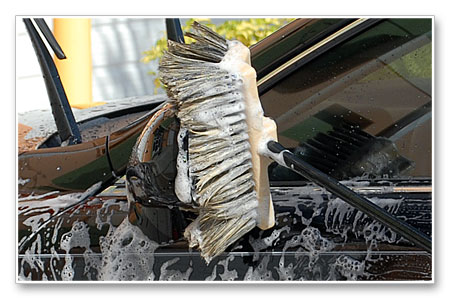
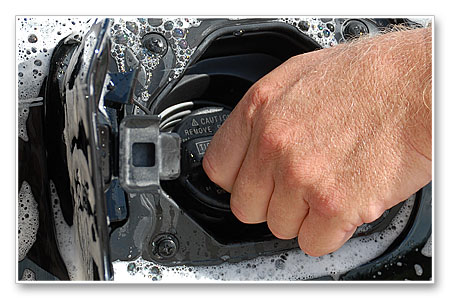
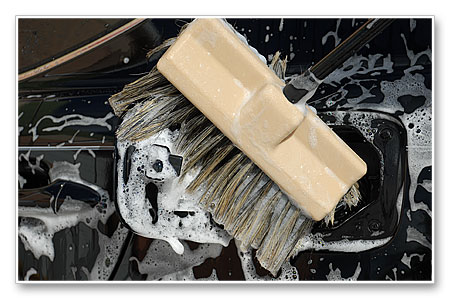
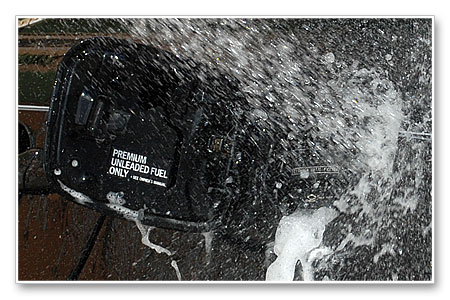

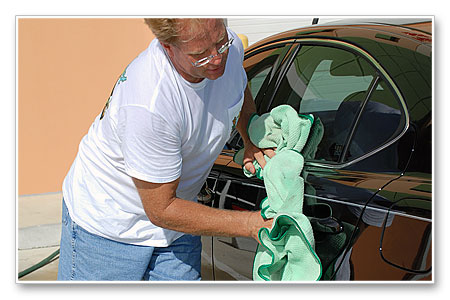

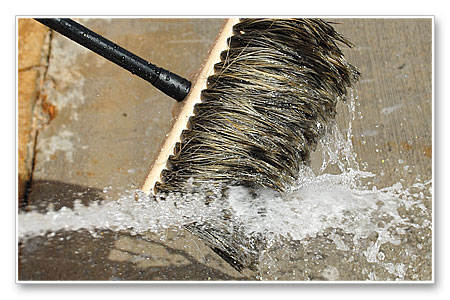


































































Bookmarks